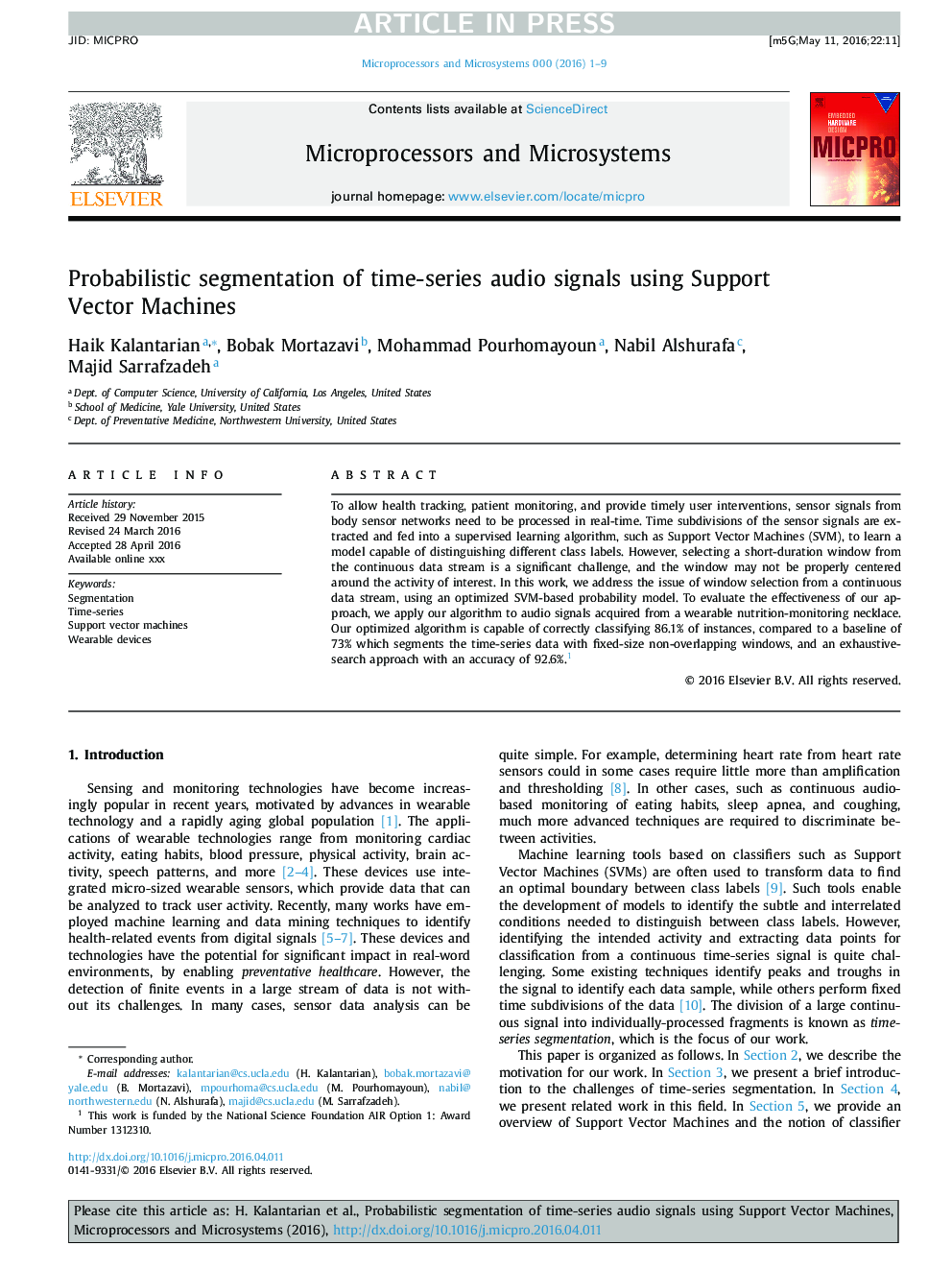| Article ID | Journal | Published Year | Pages | File Type |
|---|---|---|---|---|
| 4956860 | Microprocessors and Microsystems | 2016 | 9 Pages |
Abstract
To allow health tracking, patient monitoring, and provide timely user interventions, sensor signals from body sensor networks need to be processed in real-time. Time subdivisions of the sensor signals are extracted and fed into a supervised learning algorithm, such as Support Vector Machines (SVM), to learn a model capable of distinguishing different class labels. However, selecting a short-duration window from the continuous data stream is a significant challenge, and the window may not be properly centered around the activity of interest. In this work, we address the issue of window selection from a continuous data stream, using an optimized SVM-based probability model. To evaluate the effectiveness of our approach, we apply our algorithm to audio signals acquired from a wearable nutrition-monitoring necklace. Our optimized algorithm is capable of correctly classifying 86.1% of instances, compared to a baseline of 73% which segments the time-series data with fixed-size non-overlapping windows, and an exhaustive-search approach with an accuracy of 92.6%.1
Related Topics
Physical Sciences and Engineering
Computer Science
Computer Networks and Communications
Authors
Haik Kalantarian, Bobak Mortazavi, Mohammad Pourhomayoun, Nabil Alshurafa, Majid Sarrafzadeh,
